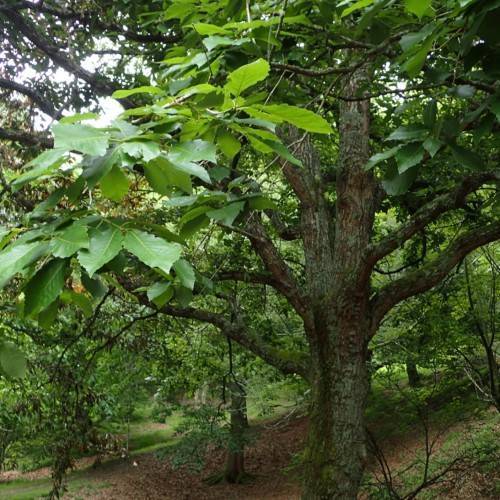
oriental white oak
Quercus aliena
Cycle:
Perennial
Watering:
Average
Hardiness Zone:
5 - 8
Flowers:
Flowers
Sun:
Full sun
Leaf:
Yes
Growth Rate:
High
Maintenance:
Moderate
Drought Tolerant:
Yes
watering
Oriental white oak requires a moderate amount of water in order to remain healthy and vigorous. The best way to water the tree is to give it 1 or 2 deep waterings each month, depending on the weather conditions. For newly planted trees, water them immediately after planting, saturating the root ball and surrounding soil thoroughly. After planting, water again when the soil is dry to the touch (at least once a week during the growing season and less often during the winter). In the summer, water the tree every week or 2 during periods of hot, dry weather. During the colder months (fall and winter), reduce the amount of water given to the tree and water only when the soil is nearly dry. It’s best to water deeply and infrequently, as shallow irrigation or too much water can cause root rot. Also, try to water the tree near its base (2-4 inches away) rather than from overhead, as this promotes deep root growth.
sunlight
Oriental white oak (Quercus aliena) does best in full sunlight, meaning it should be exposed to direct sunlight for at least 6 hours a day for optimal growth and health. It can tolerate partial shade for a few hours, but will here its growth will be stunted. The morning or early afternoon sun is best for providing optimal conditions for growth and vitality. Additionally, regular deep watering is essential in the summer months to ensure its survival and growth.
pruning
The oriental white oak should be pruned for shape and structure during the growing season between mid-spring and late summer. Heavy pruning should be avoided as the tree may not respond well, so it is best to focus on dead branches and water sprouts. Pruning also helps prevent excessive tilling of the trunk as well as neighboring trees and plants. Light pruning can help maintain the desired shape of the tree and promote healthy growth. Minor shaping and thinning of the canopy is recommended, but make sure to leave the top branches intact for better air circulation. All cuts should be made at a 45-degree angle and not too close to the trunk. Avoid pruning immediately after planting as this can put stress on the tree.
